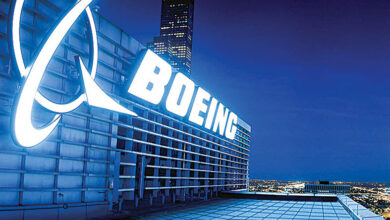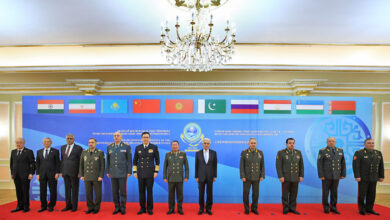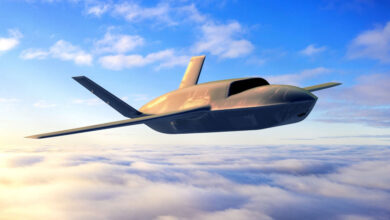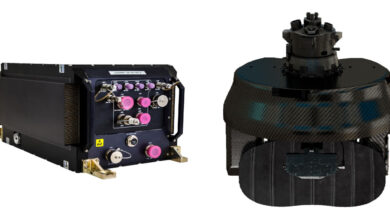Boeing is 100 – From Sea Planes To Spacecraft & Technology for every Dream to Fly
William Boeing was unquestionably a visionary. But when he founded the Pacific Aero Products Company in Seattle in July 1916 making B&W seaplanes, he could hardly have foreseen that 50 years later his company would help build the Saturn V rocket. After all, the B&W was a flimsy contraption made of spruce wood, wire and linen, while the moon-bound Saturn V was all metal and raw power. It is still the mightiest aerospace machine ever made.
Indeed, the history of The Boeing Company (as it is known today) encapsulates most of the defining moments of aviation – commercial and military, manned and unmanned, seaplanes to spacecraft, and light missiles to ICBMs. Today Boeing exports to over 150 countries and has a robust commercial backlog of over 5,750 jets conservatively valued at nearly $500 billion.
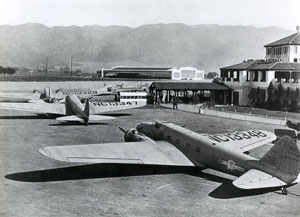 Back in 1916, the first manned powered flight of the Wright brothers was just 12 years old and aviation was yet to prosper. William Boeing’s background in the timber industry kept his fledgling company going, as did Seattle’s abundant supply of spruce – a major material of early airframes. World War I ended in 1918 and US military orders for Boeing seaplanes dried up. Huge numbers of war-surplus aircraft also wrecked the civilian market. Boeing’s woodcraft came in handy to make furniture and photo frames and keep the company afloat when others were floundering. But it had to go commercial or disappear.
Back in 1916, the first manned powered flight of the Wright brothers was just 12 years old and aviation was yet to prosper. William Boeing’s background in the timber industry kept his fledgling company going, as did Seattle’s abundant supply of spruce – a major material of early airframes. World War I ended in 1918 and US military orders for Boeing seaplanes dried up. Huge numbers of war-surplus aircraft also wrecked the civilian market. Boeing’s woodcraft came in handy to make furniture and photo frames and keep the company afloat when others were floundering. But it had to go commercial or disappear.
From Model 247 to B787: Life is but a Dreamliner
The Boeing Model 247, introduced in 1933, was the world’s first “modern” airliner – faster than many fighters, entirely of metal, with a retractable undercarriage, and survivable on one engine. In 1934, following a US Senate investigation that decreed the breakup of his beloved company, William Boeing left in dismay. Thankfully his name was retained else we might be flying Smith 737s or Jones 787s today!
With World War II the aviation accent again turned distinctly military while civil aircraft languished. Post-war the airline industry began to hanker after jets. The Boeing B707 entered service in 1958 and soon became the world’s first commercially-successful jet, and the mainstay of many airlines including Air India. Next, the B717, B720 and B727 arrived but they had limited impact. However, Boeing’s two greatest triumphs were about to enter the scene.
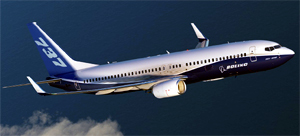 In 1967, Boeing introduced the twinjet B737, and the maximum 215-seat narrow-body became the best-selling airliner in history with over 9,000 deliveries to date. The B737, whose latest variant is the B737MAX, is rivalled only by the Airbus A320. Boeing also anticipated a bright future for wide-body jets. When its distinctive double-decker four-engine B747 Jumbo Jet launched operations in 1970, it offered more than twice the capacity of other aircraft and could reach from practically anywhere to anywhere in a day. Suddenly, the globe became smaller. The B747 transformed the economics of the aviation industry and became forever associated with Boeing as the world’s most important transcontinental aircraft. Although its huge development costs nearly bankrupted Boeing, it later became a money spinner with over 1,500 deliveries so far. Both the B747 and B737 became favourites with Air India and other carriers.
In 1967, Boeing introduced the twinjet B737, and the maximum 215-seat narrow-body became the best-selling airliner in history with over 9,000 deliveries to date. The B737, whose latest variant is the B737MAX, is rivalled only by the Airbus A320. Boeing also anticipated a bright future for wide-body jets. When its distinctive double-decker four-engine B747 Jumbo Jet launched operations in 1970, it offered more than twice the capacity of other aircraft and could reach from practically anywhere to anywhere in a day. Suddenly, the globe became smaller. The B747 transformed the economics of the aviation industry and became forever associated with Boeing as the world’s most important transcontinental aircraft. Although its huge development costs nearly bankrupted Boeing, it later became a money spinner with over 1,500 deliveries so far. Both the B747 and B737 became favourites with Air India and other carriers.
The B757 and B767 were less significant, but the 440-seat twinjet B777 introduced in 1994 had superior economics to the B747, and has since replaced it as the long-haul high-capacity airliner of choice.
In 1997, Boeing acquired arch-rival McDonnell Douglas. That left only two major commercial jet manufacturers in the market – Boeing and Airbus.
Boeing’s latest offering is the B787 Dreamliner that entered service in October 2011. The maximum 359-seat B787 is Boeing’s most fuel-efficient airliner, designed to dominate the 21st century. After some teething troubles the twinjet with a substantively carbon-fibre body has attracted over 1,150 orders till June 2016 and should help Boeing retain its 60% to 70% focus on commercial aviation.
From B-17s to ICBMs: Aerospace Extraordinary
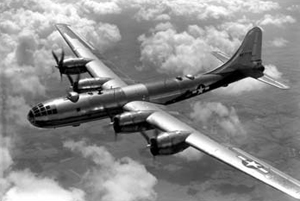 US military aviation in World War II was dominated by giant propeller-driven Boeing B-17 Flying Fortress and B-29 Superfortress bombers. Towards the end of the War, Boeing was building 364 B-17s per month so what chance did the poor Germans and Japanese have? A B-29 dropped the first atomic bomb on Hiroshima in August 1945.
US military aviation in World War II was dominated by giant propeller-driven Boeing B-17 Flying Fortress and B-29 Superfortress bombers. Towards the end of the War, Boeing was building 364 B-17s per month so what chance did the poor Germans and Japanese have? A B-29 dropped the first atomic bomb on Hiroshima in August 1945.
Post-war, the massive B-52 Stratofortress jet came to symbolise US military power around the world. Boeing also used its commercial B707 design to develop air power icons like the KC-135 Stratotanker, the E-3 Sentry AWACS, and the E-8 Joint STARS.
Not content with fixed-wing planes, in 1962 Boeing introduced the CH-47 Chinook heavy-lift helicopter which was vital for troop movement and battlefield resupply especially in the Vietnam War. More recently in 1986, it introduced the AH-64 Apache, still the world’s most advanced multi-role combat helicopter. The Indian Air Force has ordered 22 Apaches and 15 Chinooks.
Following Boeing’s acquisition of North American/Rockwell and McDonnell Douglas in 1996-97, it inherited a rich legacy of military aircraft including the P-51 Mustang fighter, the B-25 Mitchell bomber, the F-86 Sabre Jet fighter, the B-1 Lancer heavy bomber, the X-15 rocket-powered plane, the McDonnell F-4 Phantom II and the McDonnell Douglas F-15 Eagle. The hypersonic X-15 remains the fastest aircraft ever with top speed 7,274 km/h.
In the mid-1950s Boeing ventured into missile technology, beginning with short-range anti-aircraft missiles. Building on its expertise in space technology it also developed LGM-30 Minuteman intercontinental missiles.
Boeing’s own efforts and those of companies it acquired have powered practically the entire US space programme from the earliest Delta rockets, through the crewed Gemini, Mercury, Apollo and Space Shuttle programmes right up to the International Space Station.
What Makes Boeing Tick?
Today, Boeing is the biggest builder of commercial and military aircraft and offers the widest range of aerospace products in the world. Writing for Forbes in July 2016, Loren Thompson attributes Boeing’s tremendous success to various factors including ‘a culture of excellence that transcended its founder’. Boeing’s engineers did whatever it took to stay ahead of the competition and it ‘adapted as the market changed rather than specialising in a few signature products.’ Importantly, according to Thompson, it learned ‘how to generate synergies from selling to both commercial customers and the government’ and ‘used focused diversification to… cope with the ups and downs of demand cycles’.
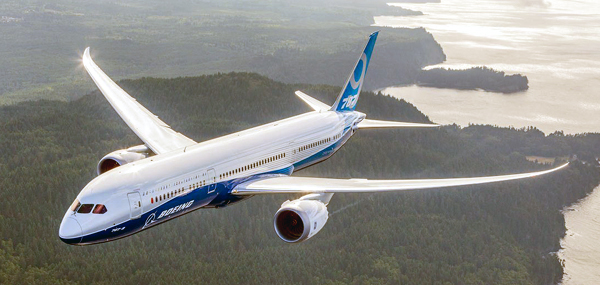
Will Boeing go on forever? It has a formidable challenger in Airbus, which has attracted more commercial orders by number in recent years. Bombardier’s new CSeries jets and emerging competition from China and Russia could also impact narrow-body sales. Even in the space launch business, relative upstarts like SpaceX, Orbital ATK and Sierra Nevada will surely try and undercut Boeing on price. But Boeing CEO Dennis Muilenburg says optimistically, “It’s about our people, the amazing innovation they bring to work every day. The talent and passion of what we do. That excitement for the future of aerospace is contagious, and it’s important.”
Boeing is already working on Yellowstone, a project to replace its entire civil aircraft portfolio with advanced technology aircraft. The B787 is part of Yellowstone. And in June 2016 Muilenburg revealed that Boeing is building a rocket about 50 per cent bigger than Saturn V to take human beings to Mars. That’s something Boeing’s rivals cannot hope to beat in a hurry.


